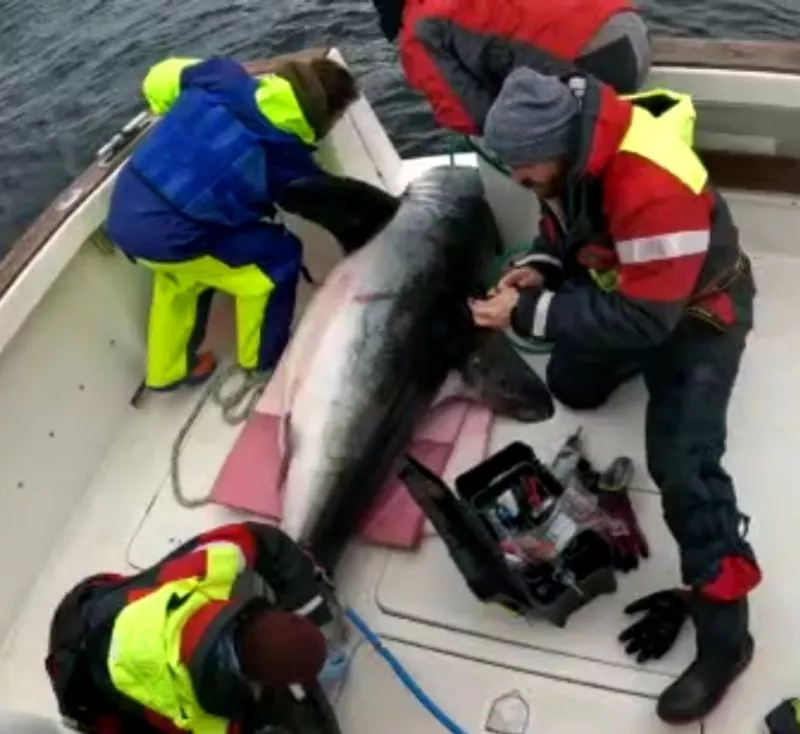Irish scientists have tagged a rare giant porbeagle shark off the Irish coast.
An international team of scientists led by Trinity College Dublin tagged and released the record-breaking endangered 2.8 metre porbeagle shark off the coast of Donegal.
The huge female, estimated to weigh between 400 and 500lbs, is the largest ever recorded in Irish waters and likely to be up to 30-years-old.
Anglers from counties Cork, Down and Antrim, respectively worked together to catch the giant “porgie” and transfer it to the scientists’ vessel, so the team could quickly measure it, attach two different types of satellite tag, and take samples to examine reproductive status.
Nick Payne, shark biologist and Assistant Professor in Trinity’s School of Natural Sciences, said the find was significant.
“It is exciting to see such huge porbeagles in Irish waters. The conservation status of porbeagles has been really concerning in this part of the world, with the European population considered critically endangered,” said Professor Payne.

“There’s evidence that the Donegal coast may act as a globally important reproductive area for this species, with lots of very large female sharks appearing here for a short period in Spring.”
Last week was the first trip in a new research collaboration between Trinity, Inland Fisheries Ireland (IFI), and local shark anglers, together with leading scientists from Australia’s James Cook University, University of Miami, and US non-profit Beneath the Waves.
Prof Payne added: “This was an incredible start to an important new project, where we will work with the local shark angling community to learn as much as we can about porbeagle movements and their reproductive dynamics in Irish waters.
“If this is an important breeding location then we need to know about it, so we can monitor and conserve the animals as best we can when they visit our shores.”
The shark, which the team have nicknamed Danu, was handled and tagged safely and released in a healthy condition. One of her satellite tags will transmit a wealth of information to a satellite on her migration history and ocean conditions encountered, before detaching in several months.
A second tag provides near real-time data on her location whenever her fin breaks the water surface – a trait of porbeagles. Prof Payne said that Danu had already covered a lot of ground and was almost at the Hebrides in Scotland 48 hours after her release.
A second large female porbeagle, around 2.4 m in length, nicknamed Sorcha was also tagged and released, but she was spending more time cruising around the same region in which she was captured.
The research team plans to tag more porbeagles in the near future. Analysis of the blood samples collected last week will begin almost immediately.







